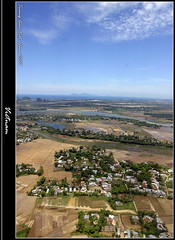
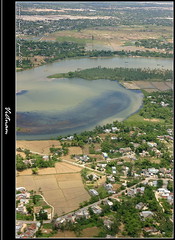
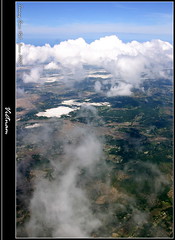
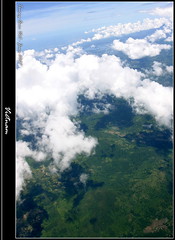
Click here to enlarge 4 photos above

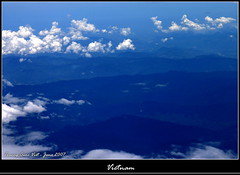
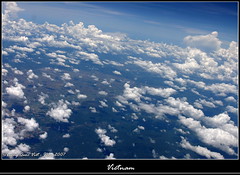

Click here to enlarge the next 4 photos
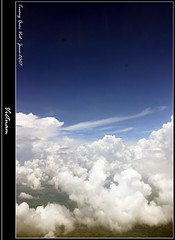



Click here to enlarge the next 4 photos
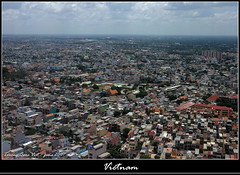

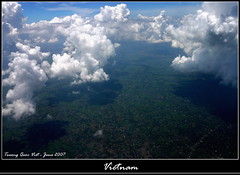
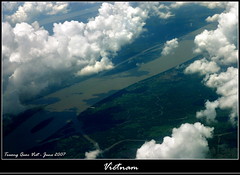
Click here to enlarge the next 4 photos
Photos taken by Truong Quoc Viet in May, 2007. Read more about him here.
Vietnam is photographed with panoramic photography. This series of photos were taken in my trip to Vietnam on February 2007
















Posted by
J.J.
at
4:24 PM
100
comments
![]()
Labels: Airplane view
Tortoise appearance on 30th April 2007 (Liberation day)
Posted by
J.J.
at
9:31 AM
0
comments
![]()
Labels: Ha Noi
The Ba Dinh Square zone. This zone is situated south of West Lake and North of Hanoi Old Citadel and is well-known for the following historical sites:
- Ho Chi Minh Mausoleum. It was opened on September 2, 1975, standing on the historical Ba Dinh square. This architectural structure has a rectangular form and evokes a lotus. Its upper part was made in the style typical of a traditional Vietnamese pagoda. The Mausoleum is opened daily for people coming to pay their homage to president Ho Chi Minh.
- Uncle Ho's (Ho Chi Minh) house-on-stilts. The house is located in the compound of the Presidential Palace ( former Residence of the Governor General of Tonkin). It is made from wood, in the style typical of the houses of mountain ethnic minorities. Next to the house are century old trees, by the side of a beautiful lake. President Ho Chi Minh lived, worked and hold meetings with top leaders from 1954 until he passed away in this house (September 1969).
- Ho Chi Minh Museum. This five-storey architectural project is situated behind Ho Chi Minh Mausoleum. It was opened on September 2, 1990 on the occasion of the 100th birthday of the President. In this Museum many objects and documents relating to Ho Chi Minh are kept.
Posted by
J.J.
at
7:38 AM
4
comments
![]()
Labels: Ha Noi
The Temple of Literature is Vietnam's historical seat of learning and is the most sacred place for the disciples of Confucius. It is one of the few remaining buildings from the original city founded by Emperor Ly Thanth Tong in the 11th century and is a well-preserved example of Vietnamese architecture. It became the site of the country's first university in 1076. Consisting of a complex of small buildings and five walled courtyards, it was an exclusive establishment teaching the principles of Confucius. Over a period of 900 years thousands of Vietnamese scholars graduated from the university. In the third courtyard is a pond, the Well of Heavenly Clarity, and beside it are 82 stone stelae, mounted on tortoises and engraved with the names of successful graduates. There is also a temple dedicated to Confucius and an altar where the king and his mandarins would make sacrifices.
Click photo to enlarge
Posted by
J.J.
at
3:35 PM
0
comments
![]()
Labels: Ha Noi
The west lake area is estimated at 480 hectares, being the biggest lake in the city. A road that runs around the lake is as long as 12 kilometers. It passes several flower-growing villages such as flower Nghi Tam village, Tay Ho, and Peach tree planting Nhat Tan village. Situated nearby the lakeside road are several famous pagodas and temples such as Phu Tay Ho and Kim Lien Pagoda. In feudal regimes many royal palaces and rest houses have been built to used as resort places for kings and senior court officers. Now Ho Tay has been earmarked for the city's major tourism development center.
Phu Tay Ho is one of the more popular shrine on the shore of Ho Tay. During the first and fifteenth day of the lunar month, people from all over Ha Noi pour to the shrine to pay respect to the deities. On these days, the roads are filled with people dressed in colorful attire heading to the narrow road leading to the shrine. Phu Tay Ho is also famous for the Bun Oc (escargot vermicelli soup) and Banh Tom (shrimp cakes) sold in stalls along the way.
Posted by
J.J.
at
1:17 PM
0
comments
![]()
Labels: Ha Noi
The West Lake zone. West Lake has an area of over 800 hectares. It is a former section of the Red River. There are many legends about this lake. Formerly this lake was called "Dam Dam" (Misty lake). Around the lake, stand many palaces of feudal kings and lords. Numerous ancient and beautiful pagodas and temples are also seen in the surroundings of West Lake. In the old times, in the area around West lake there were craft villages specializing in paper and silk production, etc., and villages providing the city with flowers or vegetables. At present, many hotels, restaurants and villas have been built around the lake. In future, this place will be the recreation and tourist spot of Hanoi.
The Youth Road can be compared to a beautiful bridge spanning across the two large bodies of water - West Lake to the northwest and Truc Bach Lake to the southeast. This 992-metre-long road has been made into two-lane road with a line of big trees grown in between the lanes. On either side of the road is grown with flamboyant trees, weeping willow trees and bang lang trees. In summer the road looks colorful with the many flamboyant trees in blossom and bang lang trees with violet flowers.
The west lake area is estimated at 480 hectares, being the biggest lake in the city. A road that runs around the lake is as long as 12 kilometers. It passes several flower-growing villages such as flower Nghi Tam village, Tay Ho, and Peach tree planting Nhat Tan village. Situated nearby the lakeside road are several famous pagodas and temples such as Phu Tay Ho and Kim Lien Pagoda. In feudal regimes many royal palaces and rest houses have been built to used as resort places for kings and senior court officers. Now Ho Tay has been earmarked for the city's major tourism development center.
Click image to enlarge
Posted by
J.J.
at
9:25 AM
2
comments
![]()
Labels: Ha Noi
Ho Hoan Kiem or Lake of the Returned Sword was once a part of the Red river (song Hong). Through thousands of years of changes in the geography, the lake moved eastward to its present position many kilometers from the river. The lake was once called Luc Thuy or Green Water because the water was green year round. In the fifteen century, the lake was named Ho Hoan Kiem, based of a legend that is quite similar to King Arthur and the Lady of the Lake's legend.
Click photo to enlarge
Posted by
J.J.
at
9:17 AM
0
comments
![]()
Labels: Ha Noi
Powered by Blogger. DownRight Blogger Theme v3.0 created by (© 2007) Thur Broeders